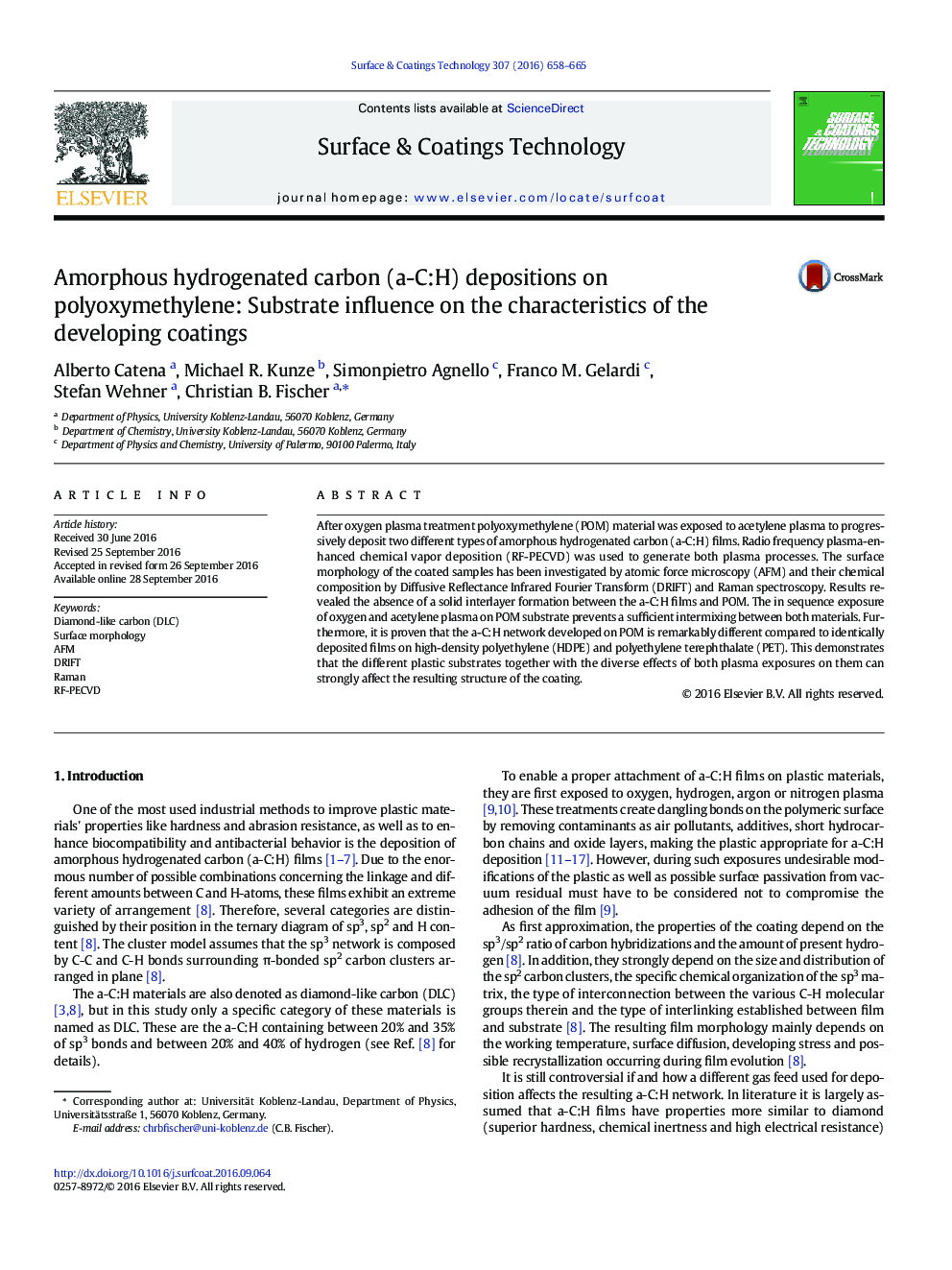| Article ID | Journal | Published Year | Pages | File Type |
|---|---|---|---|---|
| 6481481 | Surface and Coatings Technology | 2016 | 8 Pages |
â¢Thickness dependent a-C:H films via direct and indirect plasma on POMâ¢Weak attachment for both a-C:H types to the plastic substrateâ¢Both show =CH2 signals from the start, but embedded in different surroundings.â¢At 1000 nm a merging phenomenon of grains occurs.â¢The specific film network is clearly affected by the POM substrate.
After oxygen plasma treatment polyoxymethylene (POM) material was exposed to acetylene plasma to progressively deposit two different types of amorphous hydrogenated carbon (a-C:H) films. Radio frequency plasma-enhanced chemical vapor deposition (RF-PECVD) was used to generate both plasma processes. The surface morphology of the coated samples has been investigated by atomic force microscopy (AFM) and their chemical composition by Diffusive Reflectance Infrared Fourier Transform (DRIFT) and Raman spectroscopy. Results revealed the absence of a solid interlayer formation between the a-C:H films and POM. The in sequence exposure of oxygen and acetylene plasma on POM substrate prevents a sufficient intermixing between both materials. Furthermore, it is proven that the a-C:H network developed on POM is remarkably different compared to identically deposited films on high-density polyethylene (HDPE) and polyethylene terephthalate (PET). This demonstrates that the different plastic substrates together with the diverse effects of both plasma exposures on them can strongly affect the resulting structure of the coating.
Graphical abstractDownload high-res image (152KB)Download full-size image
